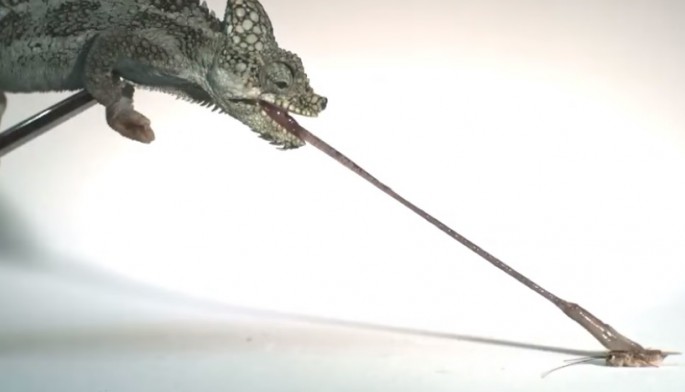Don't underestimate the size of chameleons, as they are also vicious predators that can hunt large prey from grasshoppers to mice, and even birds. Thanks to their powerful and quick moving tongue, these small creatures are also skilled hunters.
Past studies already show how their elastic-like, long tongue works, however, in this new study, scientists discovered that chameleons apparently do not wrap their tongues around their prey, but rather, their tongue acts like an adhesive or a velcro, that has already been theorized in the past.
In this new study, an international team of researchers revealed the mechanism behind the bizarre, powerful chameleon tongue, as it apparently produces saliva that is 400 to 1,000 times more viscous and stickier than what humans can produce.
This super thick and sticky mucus is an effective tool in helping chameleons catch their prey, especially large ones that is a third of its own weight. According to co-author of the study, physicist Pascal Damman from the University of Mons in Belgium, the team was surprised to find out that chameleon saliva is so viscous, which also marks the first time that chameleon's saliva viscosity has been examined and analyzed.
Damman and the team measured the adhesive properties of the saliva by using mathematics and calculations. During experiments, the team observed how a captive chameleon would stick its tongue on the glass, where several crickets were placed behind it. The team then collected saliva samples and analyzed the specimens in laboratory conditions. Researchers describe the saliva samples to be "thick as honey".
Using a tiny bead, the scientists covered this bead in chameleon saliva, rolling it over on a slanted glass plate. Researchers then observed how the saliva slowed down the bead acceleration, assessing its viscosity.
With the help of this sticky saliva, chameleons' tongues also possess a tiny suction cup on the tip of its tongue, which helps the creature ensnare its meal. The faster the tongue snaps on its prey, the adhesion also becomes more powerful. Apart from chameleons, frogs, salamanders and toads also possess similar sticky saliva to catch prey.
This new study is published in the journal, Nature Physics.



























